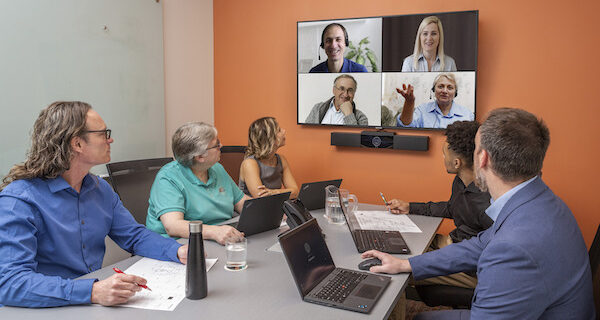Managing Resource Scarcity: Responding To Common Staffing Challenges

While the global material supply crisis has eased somewhat, a more pressing challenge for facility administrators is the shortage of engineers and those trained to perform various skilled trades. According to Pew Research Center, “blue-collar” workers have become less satisfied with their jobs compared to other professionals, especially among younger and female populations. Several reasons contribute to a perceived diminished value for these types of jobs, and it’s more evident that a widening disconnect exists between management and staff members. As these trends persist, manufacturers and their customers will need to consider reimagining their project planning strategies. Labor shortages cause backlogs of work, with many companies experiencing a vicious cycle of extending project timelines and strained budgets. The situation is unlikely to improve without a willingness among industry leaders to consider different approaches to staffing, job management, and overall communication.
Acknowledging The Shrinking Talent Pipeline
Attracting and retaining talent has never been more crucial. A steady workforce reduces costs and time spent on training and produces more effective work. Complicating matters, however, is that engineering as a profession is no longer viewed as a pathway for rapid career advancement and high-paying positions compared to other roles. At the same time, the problem-solving skills that engineers typically possess are coveted by other industries more likely to provide opportunities with competitive salaries, a preferable work-life balance, and pathways to career transitions. Additionally, the inability to work remotely, more common in other professions, significantly reduces the overall attractiveness of the engineering field.

The cumulative effect is a higher likelihood to outsource work, which escalates administrative costs and intensifies competition for limited resources. Ultimately, this creates a supply chain issue where a lack of resources on the supplier side leads to longer lead times for new equipment or components, requiring managers to adjust production goals accordingly. According to researchers with the Society for Human Resource Management (SHRM), the average employer can expect recruiting and retention challenges to remain a significant obstacle, with scope and scale varying greatly based on industry, type of organization, and the skills necessary to meet the job description and needs of employers and clients. Building and maintaining a workforce requires developing and improving workplace culture. Ongoing assessment of non-monetary benefits, such as career development, engagement initiatives, and flexible work options, will also help attract top talent and keep current employees from exploring other options, according to SHRM.
Management Mitigation And Offsetting Constraints
Hiring a new resource does not immediately improve capacity, which drops when new personnel are onboarding and training. New employees’ skill levels and experience affect the duration of that drop. As such, retaining employees is a critical priority. Gone are the days when employees stayed in one place for their careers. According to the U.S. Bureau of Labor Statistics (BLS), the median duration of tenure is slightly more than four years. This statistic varies considerably based on age, industry, and role, but creating an environment where employees feel valued and empowered can counter this trend. There’s no single blueprint for recruitment and retention—many considerations depend on how each company evaluates needs versus goals.
There is an attainable middle ground of adopting modernized strategies and hiring candidates based on a cultural fit that does not exclude appropriate technical skills. Engineering and other roles can be performed with a fully remote schedule when there’s confidence that the individual can be trained to execute the technical aspects of the work. The target is to recruit those who understand the company’s mission and share the same philosophies for long-term success, sentiments, and values vital to the company. Those who present this profile are more likely to successfully execute the work, whether remote, onsite, or hybrid. Fostering a healthy work-life balance is essential and has diminished the allure of overtime as a benefit because working evenings and weekends to help the company meet production is seen more as a sacrifice today. Other avenues worth exploring include fair pay and benefits packages, mentoring employees to help them succeed in their roles and ambitions, implementing employee recognition programs, and creating an open environment that encourages questions and suggestions on how to improve working conditions.

Effective communication, particularly related to project scheduling, is now a standard expectation. Nothing complicates production more than trying to plan around unsustainable schedules. The most beneficial way to compensate is through honest communication with all stakeholders. End users, from engineering and design through purchasing and manufacturing, deserve transparency to properly align expectations. It’s better to deliver on what’s communicated and to build a buffer into a schedule than to fall short of a proposed timeline that was inherently difficult to achieve. When necessary, determining the types of tasks to successfully outsource without affecting the quality of deliverables is worthwhile, whether that involves labor, increasing stock for responses to rush orders, or other collaborative efforts.
Predictive and preventative maintenance also mitigates resource scarcity as proactive approaches. Consider evaluating the operation hours for critical equipment and pre-ordering parts or materials while scheduling maintenance work before failures occur to lengthen lifespans and identify problems earlier. Instead of planning downtime and paying high premiums for repairs, preventive protocols promote a regular cadence of inspections and low-level service calls, although the current U.S. administration’s policy on tariffs could impact product procurement with otherwise trusted suppliers.
Future Impact Of Automation And Smart Technologies
Automation and smart technologies will advance to offset labor shortages and material challenges when appropriately managed. Repetitive tasks are best to automate for consistency’s sake and are often more difficult positions to staff due to high turnover rates. Additionally, products designed for manufacturability are suitable for repeated processes that improve efficiencies. A few extra hours during the engineering phase can pay dividends during manufacturing with simpler builds and installs. With the increasing capabilities of artificial intelligence (AI) and the use of scripting languages through AI and machine learning (ML), automation can be implemented to complete specific tasks, improve workflows, and facilitate more projects to offset time management issues. The key is to remain aware of the company’s history and proven track record while innovating and supporting employees who propose new concepts and approaches. As older generations retire, finding this balance will likely affect efficiency and profitability.
The Role Of Government And Industry In Education
There will always be a demand for trade-type professionals. It is crucial for industry leadership to invest in this future by participating in job fairs and other forms of engagement to promote these options as viable career choices. They can also suggest trade schooling to produce more qualified candidates who are not pigeonholed into one specific field and develop long-term goals. Relying on the government is not ideal because of the difficulty many have with student loans and the average cost of a college education.
BLS statistics demonstrate how overall employment openings have dropped steadily since 2022, following a rebound after the pandemic ended. A discrepancy between openings and hires affects the overall scarcity of resources. The number of unemployed people per job opening has been less than one for the past four years, indicating a shortage of qualified individuals available to fill open positions. The most effective method to move the industry forward hinges on companies creating environments that encourage recruitment and retention to meet the evolving needs of the more diversified workforce.

